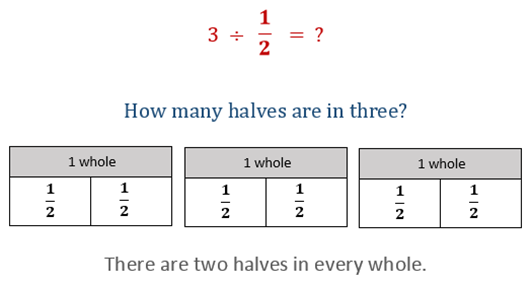Clarifications:
Essential Understandings
Concrete:
- To show whole numbers divided by unit fractions, use fraction manipulatives to model the wholes. Use a template to guide placement of the unit fractions to illustrate that every whole can be represented in terms of groups of unit fractions (e.g., 3 ÷ 1/2 is 3 wholes divided into 6 groups of 1/2).

- Count the number of groups to determine the quotient.
- Use visual representations to model whole numbers and groups of unit fractions.
- Count the number of groups to determine the quotient.
| Number: MAFS.5.NF.2.AP.7a | Category: Access Points |
| Date Adopted or Revised: 05/14 |
Cluster:
Apply and extend previous understandings of multiplication and division to multiply and divide fractions. (Major Cluster) : Clusters should not be sorted from Major to Supporting and then taught in that order. To do so would strip the coherence of the mathematical ideas and miss the opportunity to enhance the major work of the grade with the supporting clusters. |
